Peacekeeping in Africa: A Profile
Africa Leads in Missions and Participation
ADF STAFF
African nations distinguish themselves in United Nations and African Union peacekeeping missions on the continent and worldwide. The continent also is home to half — seven of 14 — of all active U.N. missions.
In March 2018, there were 91,058 people serving in 14 peacekeeping missions and eight special political missions. Of that total, 10,679 served as police officers, 79,063 served as troops or staff officers, and 1,316 were U.N. military experts on mission (UNMEM).
Nations on the African continent contribute the lion’s share of security personnel to United Nations peacekeeping missions operating in Africa and worldwide. Consider these statistics:
- As of March 31, 2018, 38 out of 54 African nations — more than 70 percent — were providing Soldiers, police officers, experts on mission and staff officers to 14 peacekeeping and some of the U.N.’s smaller political missions worldwide.
- African personnel contributions total 44,845, representing 49 percent of the U.N.’s global peacekeeping security personnel.
- Worldwide, African nations provide nearly 48 percent of the 77,145 troops serving in U.N. missions, and 64 percent of the police officers serving.
- African countries supply about 33 percent of all military experts on mission and 42 percent of staff officers worldwide.
DEFINITIONS
When looking at peacekeeping personnel, it’s important to know what each group does. United Nations peacekeeping personnel can be divided into six primary categories:
CONTINGENT TROOPS
United Nations member states contribute formed military units that correspond to formations such as companies, brigades or battalions. Each is a contingent.
MILITARY EXPERTS ON MISSION
These include observers, liaison officers and advisors. These positions typically serve part time and perform quasi-diplomatic functions.
POLICE
U.N. police build and support or, in some cases, substitute for host-state police services to prevent and detect crime, protect life and property, and maintain public order and safety.
STAFF OFFICERS
These officers draft military orders; situation reports; correspondence; planning procedures; and U.N. procedures, rules and regulations.
CIVILIANS
Civilians promote and protect human rights, strengthen the rule of law, foster political and reconciliation processes, promote mine awareness, and serve as public information officers. They also support finance, logistics, communications technology, human resources and administration.
U.N. VOLUNTEERS
They provide administrative, logistical, technical and medical expertise to various missions to assist in peacebuilding, humanitarian work, elections and emergency health needs, among other things.
MONUSCO
The United Nations Organization Stabilization Mission in the Democratic Republic of the Congo
This mission’s roots are in events after the Rwandan genocide of the 1990s, when Rwandan Hutus flooded the eastern Democratic Republic of the Congo (DRC), eventually sparking a rebellion that took control of the country from President Mobutu Sese Seko. Soon after, a rebellion supported by Rwanda and Uganda started in the Kivu regions, leading to the creation of the United Nations Organization Mission in the Democratic Republic of the Congo (MONUC) in 1999 to oversee a cease-fire. MONUC remained after the 2006 elections and was renamed MONUSCO on July 1, 2010. MONUSCO’s purpose is to protect civilians and consolidate peace in the DRC. According to the U.N., the mission has been authorized to use “all necessary means” to protect civilians, humanitarian personnel and human rights defenders who are “under imminent threat of physical violence” and to support the DRC government as it stabilizes and consolidates peace.

DEPLOYED TOTALS AS OF MARCH 2018; CIVILIAN DATA AS OF AUGUST 2017; U.N. VOLUNTEER DATA AS OF JANUARY 2018
MINUSMA
The United Nations Multidimensional Integrated Stabilization Mission in Mali
In early 2012, a Tuareg movement, aligned with armed Islamic extremist groups, attacked government forces in Mali’s north. Soon after, a military coup accelerated the collapse, leading rebels to capture the cities of Gao, Kidal and Timbuktu and to proclaim an independent state. The Economic Community of West African States formed the African-led International Support Mission to Mali (AFISMA) in late 2012, which gave way to MINUSMA several months later. MINUSMA was established on April 25, 2013, to help transitional authorities stabilize the country. The mission also ensures security, protects civilians, supports national political dialogue and reconciliation, helps re-establish state authority, rebuilds the security sector, and promotes and protects human rights in Mali.
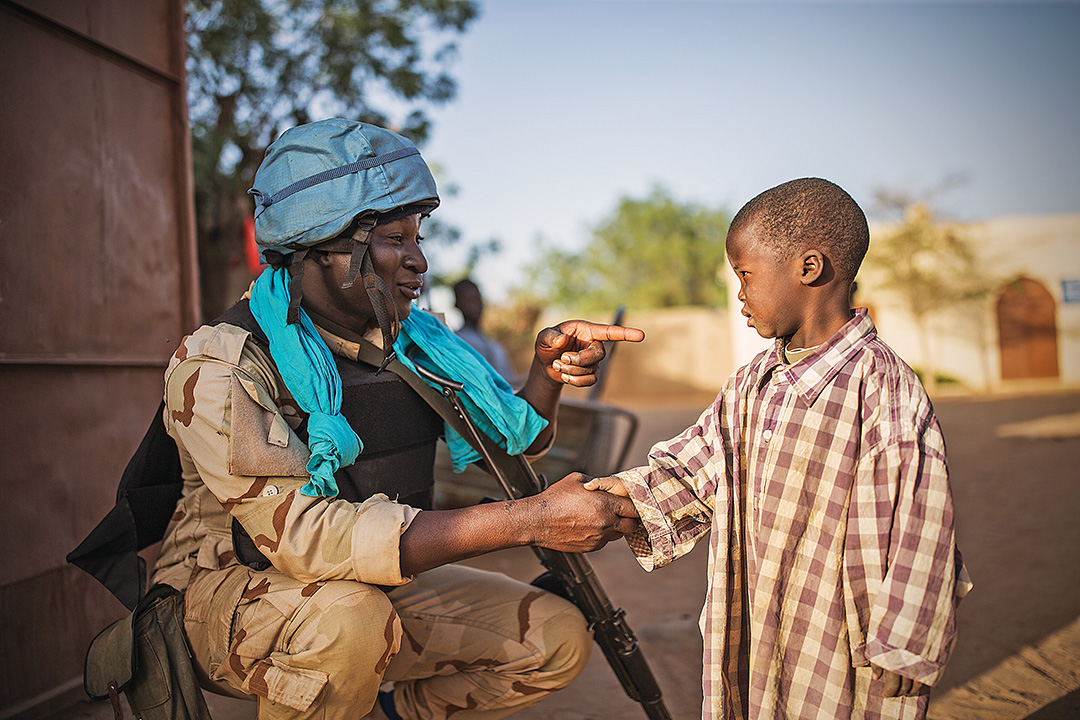
MINUSCA
United Nations Multidimensional Integrated Stabilization Mission in the Central African Republic
In December 2012, the mainly Muslim Séléka rebels launched attacks and eventually seized the capital, Bangui, forcing President François Bozizé to flee. The conflict took on sectarian overtones as the mainly Christian anti-Balaka clashed with Muslims in and around Bangui. MINUSCA’s top priority is protecting civilians. It also supports the government transition process; creates space for humanitarian assistance; promotes and protects human rights; supports justice and the rule of law; and promotes disarmament, demobilization, reintegration and repatriation. MINUSCA subsumed the U.N. Integrated Peacebuilding Office in the Central African Republic. In September 2014, the African-led International Support Mission in the Central African Republic transferred authority to MINUSCA.

UNAMID
African Union/United Nations Hybrid Operation in Darfur
UNAMID was established on July 31, 2007, and is charged with protecting civilians and securing the delivery of humanitarian aid. It replaced an earlier mission, the African Union Mission in Sudan, and is distinctive in that it is a joint effort of the U.N. and the AU. Land and grazing rights have resulted in years of tension in Darfur. In 2003, rebel groups the Sudan Liberation Army and the Justice and Equality Movement attacked government targets, accusing Khartoum of favoring Arabs over blacks. Sudanese military forces and militias known as the Janjaweed, which means “devils on horseback,” killed and displaced Darfuri civilians. Hundreds of thousands have died, and millions have been displaced. The mission also monitors the borders of Chad and the Central African Republic.
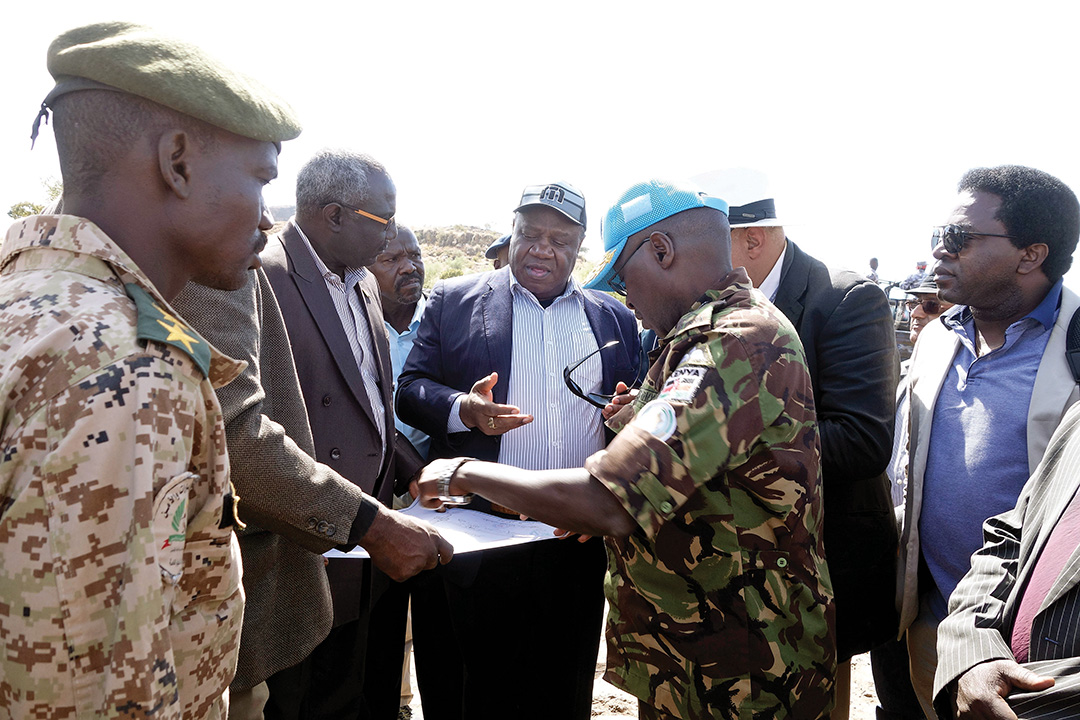
DEPLOYED TOTALS AS OF MARCH 2018; CIVILIAN DATA AS OF AUGUST 2017; U.N. VOLUNTEER DATA AS OF JANUARY 2018
UNMISS
United Nations Mission in South Sudan
After South Sudan’s independence in 2011, the U.N. Security Council determined that the situation there continued to threaten regional peace and security. UNMISS is charged with consolidating peace and security and helping to establish conditions for development. After a crisis broke out in December 2013, the Security Council in May 2014 reprioritized the UNMISS mandate to protect civilians, monitor human rights, and support the delivery of humanitarian assistance and implementation of the Cessation of Hostilities Agreement.
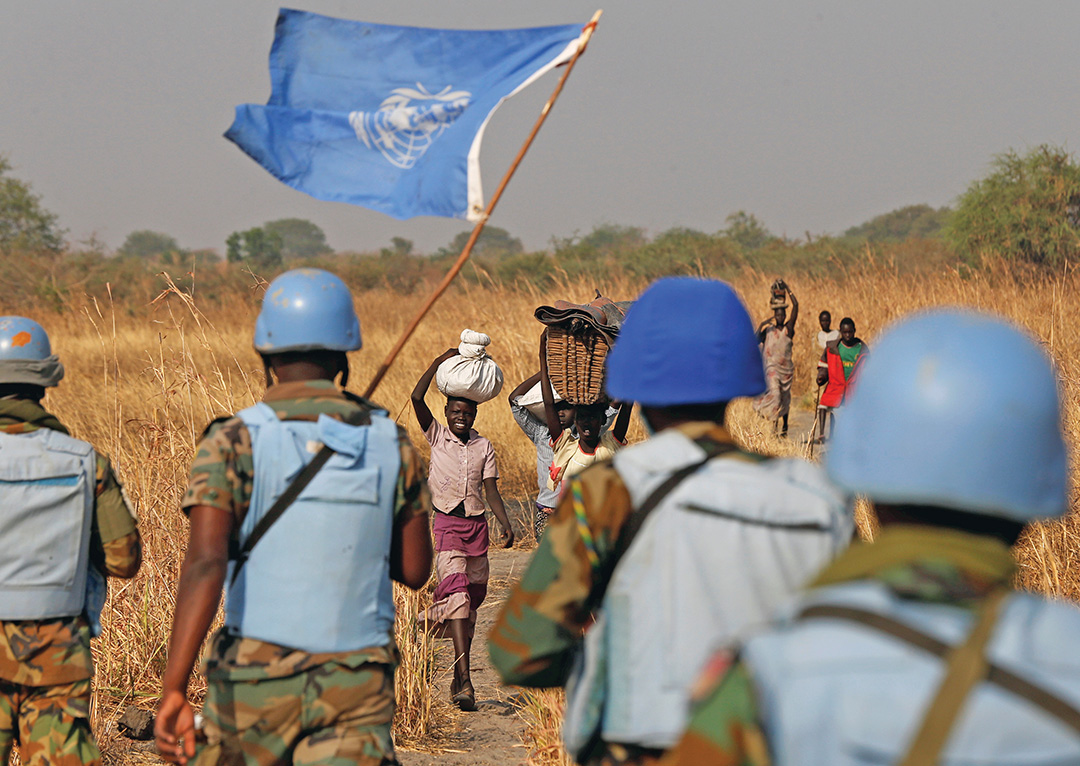
UNISFA
United Nations Interim Security Force for Abyei
UNISFA was established in June 2011 in response to violence, escalating tensions and population displacement in oil-rich Abyei, a small disputed border region between Sudan and South Sudan. When South Sudan obtained independence, the governments in Juba and Khartoum failed to resolve the status of Abyei. It is claimed by the Ngok-Dinka people, who raise livestock there. The Misseriya, northern Arabs who migrate into Abyei each year seeking water and pasture for their cattle, also claim it. The operation monitors the border and helps protect humanitarian aid deliveries. It can use force to protect civilians and humanitarian workers. UNISFA came after Sudan and the Sudan People’s Liberation Movement agreed to demilitarize Abyei and let Ethiopian troops monitor the area.

MINURSO
United Nations Mission for the Referendum in Western Sahara
MINURSO was established in April 1991 in accordance with settlement proposals accepted in August 1988 by Morocco and the Frente Popular para la Liberación de Saguia el-Hamra y de Río de Oro (Frente POLISARIO). The plan provides for a transitional period in which a referendum would be prepared, giving the people of Western Sahara a choice between independence and integration with Morocco. In 2016, the U.N. Security Council called on parties to work toward more substantive negotiations.
DEPLOYED TOTALS AS OF MARCH 2018; CIVILIAN DATA AS OF AUGUST 2017; U.N. VOLUNTEER DATA AS OF JANUARY 2018
AMISOM
The African Union Mission in Somalia
AMISOM began in Somalia in 2007 to protect a transitional government that arose out of the chaos that had bedeviled the country since the 1990s. The AU mission, which was approved by the U.N., began with troops from Uganda and soon expanded to include more than 22,000 personnel, including troops from Burundi, Djibouti, Ethiopia, Kenya, Sierra Leone and Uganda. Sierra Leone later withdrew its troops.
Police-contributing countries have changed over the years, but recent contributors are Ghana, Kenya, Nigeria, Sierra Leone, Uganda and Zambia.
U.N. Security Council Resolution 2372 indicated that maximum personnel would be reduced to 21,626 by the start of 2018. Uniformed personnel are to drop to 20,626 by October 30, 2018. The pace could accelerate, depending on the capacity of Somali security forces.
AMISOM’s purpose is to provide security and reduce the threat of insurgent group al-Shabaab. The goal is to mentor Somali security forces and police officers and eventually hand over security duties to these forces.
The mission has been a dangerous one, because troops often have directly engaged al-Shabaab militants. However, accurate mission fatality figures are not available because contributing countries do not report the numbers.
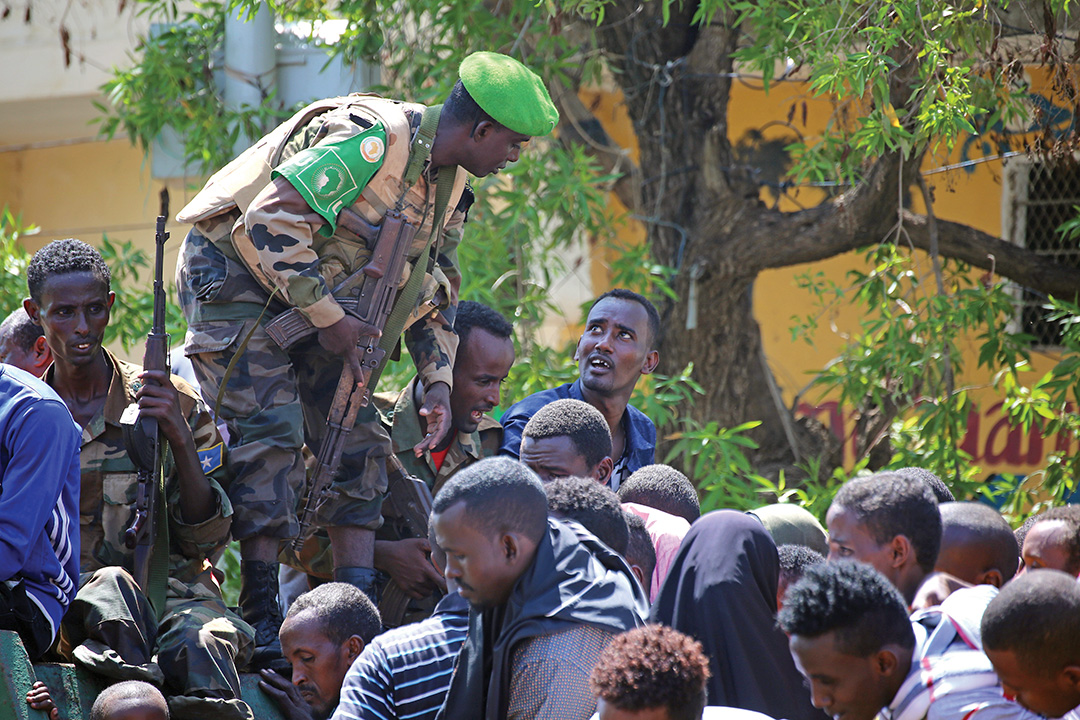
DEPLOYED TOTALS AS OF MARCH 2018; CIVILIAN DATA AS OF AUGUST 2017; U.N. VOLUNTEER DATA AS OF JANUARY 2018




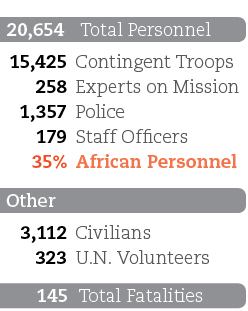
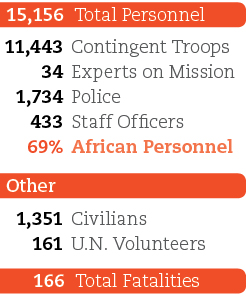


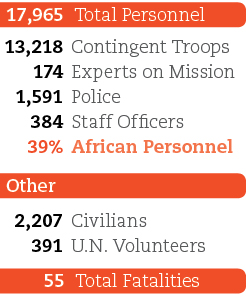


Comments are closed.